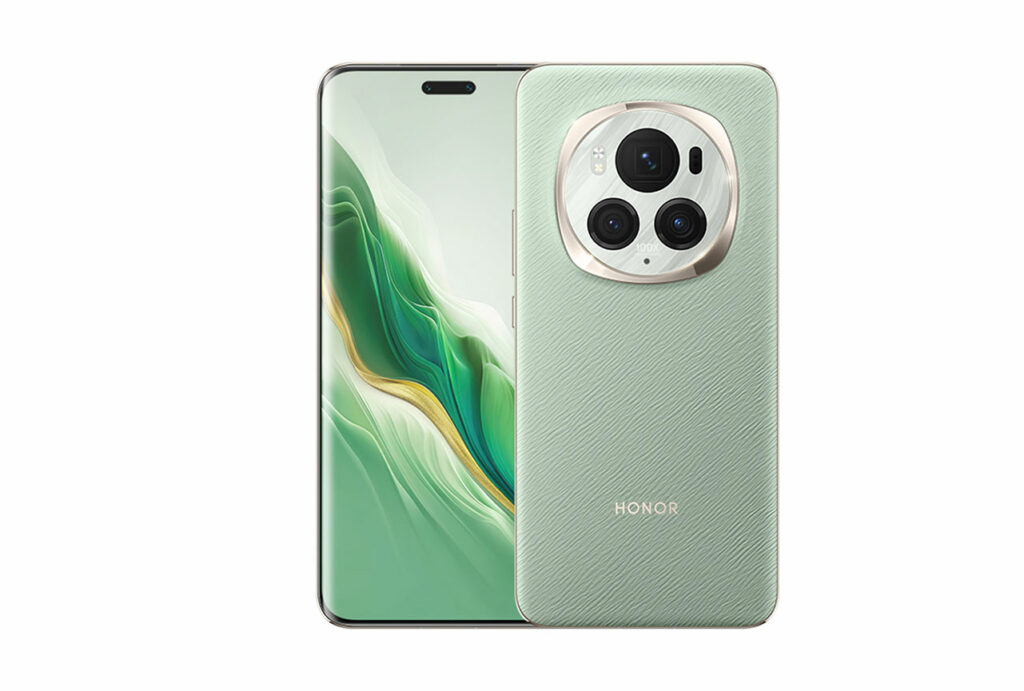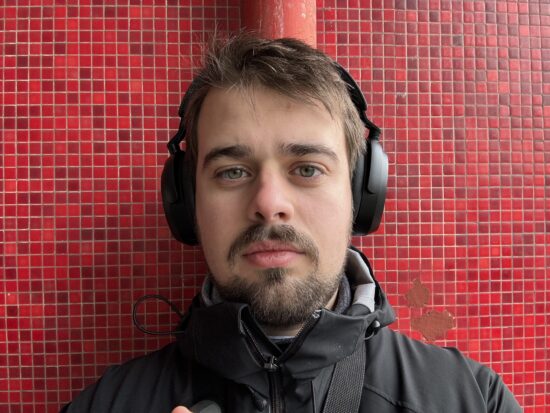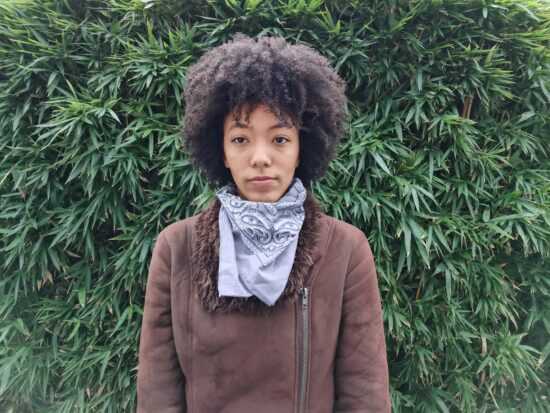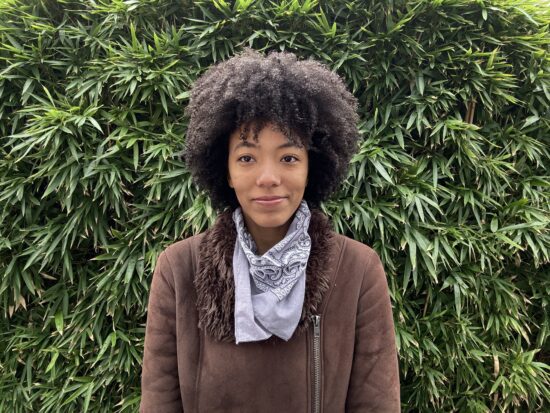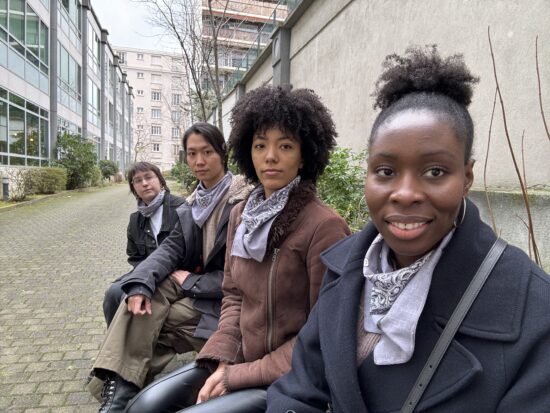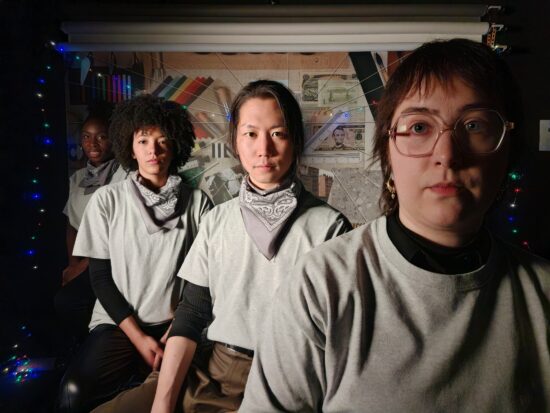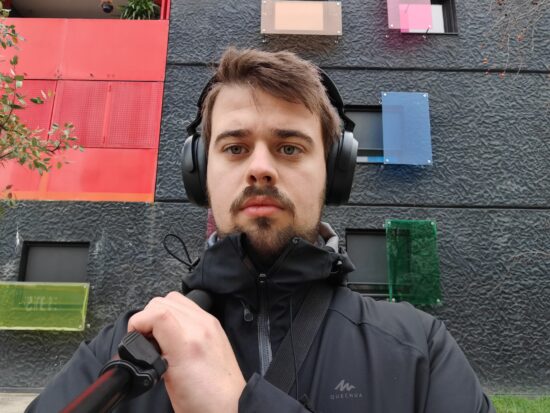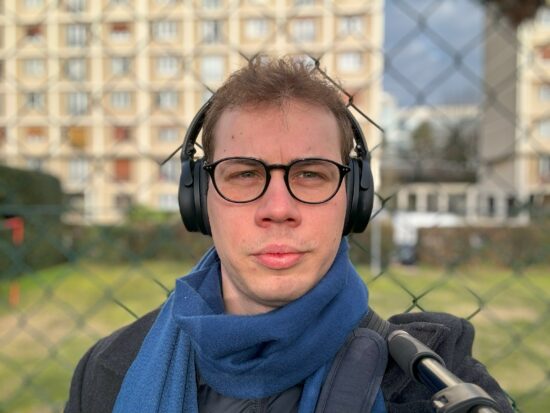We put the Honor Magic6 Pro through our rigorous DXOMARK Selfie test suite to measure its performance in photo and video from an end-user perspective. This article breaks down how the device fared in a variety of tests and several common use cases and is intended to highlight the most important results of our testing with an extract of the captured data.
Overview
Key front camera specifications:
- 50MP sensor
- f/2.0-aperture lens
- Autofocus
- 4K video at 30fps, 1080p at 30/60fps (4k at 30 fps tested)
Scoring
Sub-scores and attributes included in the calculations of the global score.
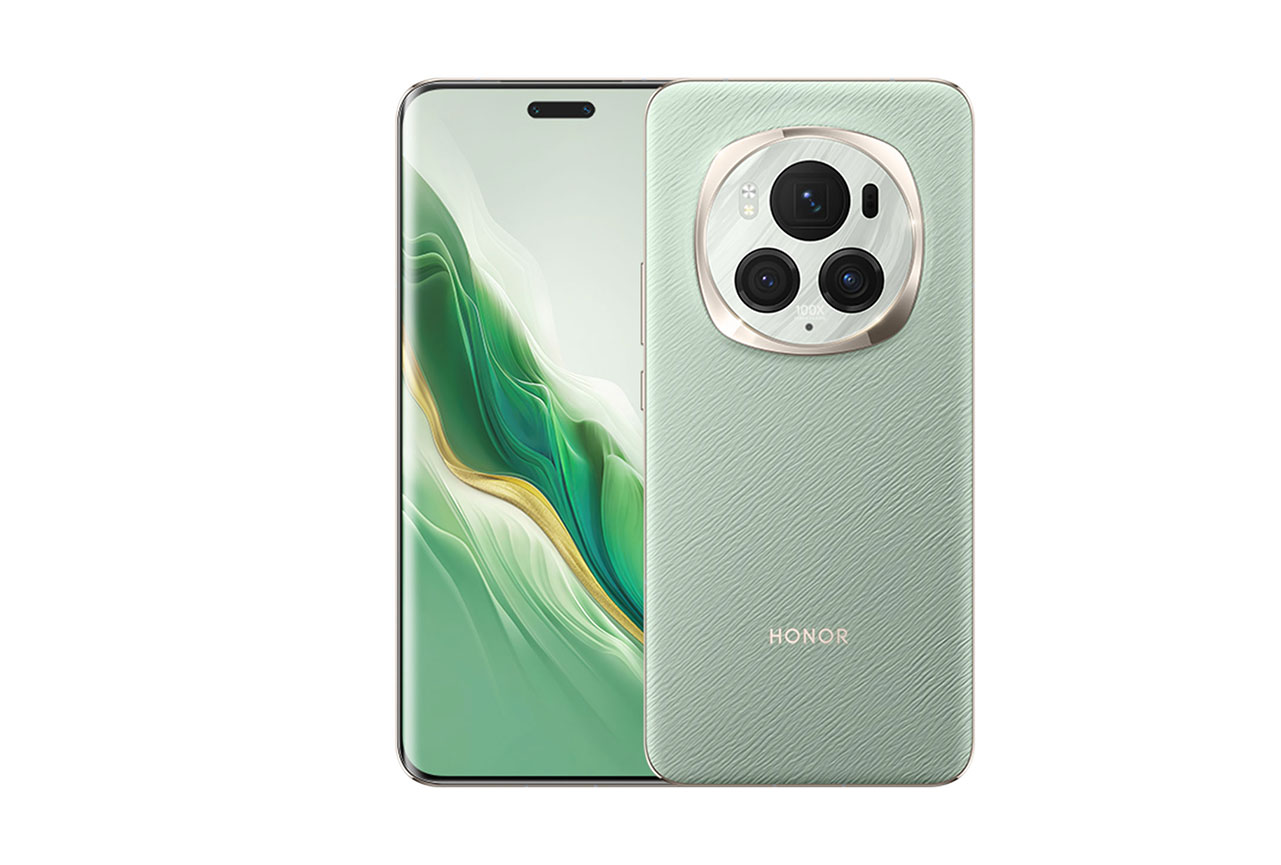
Honor Magic6 Pro


 2nd
2nd 2nd
2ndPros
- Accurate target exposure and wide dynamic range
- Neutral white balance and fairly pleasant color rendering
- Low noise levels in bright light and indoors
- Wide depth of field
Cons
- Slightly strong contrast in backlit scenes
- Loss of fine detail in low light
- Sharpness differences between frames in video with motion
- Artifacts such as hue shift near saturation sometimes visible in outdoor and indoor conditions
The Honor Magic6 Pro delivered an impressive performance in the DXOMARK Selfie test, achieving the highest overall score to date. The new model’s updated front camera hardware undoubtedly contributed to this outstanding result and helped achieve noticeable improvements over the predecessor. While the Magic5 Pro had to make do with a 12MP image sensor and f/2.4-aperture lens, the new device comes with a 50MP resolution and a wider f/2 aperture, offering significantly better light collection capabilities. In addition, the new Snapdragon 8 Gen 3 chipset provides plenty of image processing power and the addition of an autofocus system allows for precise focusing at all subject distances.
In our tests, the Honor Magic6 Pro delivered the most well-rounded performance to date, achieving excellent results across all sub-attributes. It was even better than the previous No. 1, the Apple iPhone 15 Pro Max, in most test areas, except exposure and color in both photo and video. When comparing the two front-runner devices, we can see that the iPhone generally provides better contrast and more vibrant colors. However, the iPhone images also come with significant amounts of noise. The Honor Magic6 Pro, on the other hand, does particularly well for noise, delivering an impressive trade-off between texture preservation and noise reduction.
Please note that the Magic6 Pro was tested in SDR format for both photo and video as no HDR format is available when shooting with the front camera. The Apple iPhone 15 Pro Max was tested in HDR mode.
Test summary
About DXOMARK Selfie tests: For scoring and analysis, DXOMARK engineers capture and evaluate more than 1,500 test images both in controlled lab environments and in outdoor, indoor and low-light natural scenes, using the front camera’s default settings. The photo protocol is designed to take into account the user’s needs and is based on typical shooting scenarios, such as close-up and group selfies. The evaluation is performed by visually inspecting images against a reference of natural scenes, and by running objective measurements on images of charts captured in the lab under different lighting conditions from 1 to 1,000+ lux and color temperatures from 2,300K to 6,500K. For more information about the DXOMARK Selfie test protocol, click here. More details on how we score smartphone cameras are available here. The following section gathers key elements of DXOMARK’s exhaustive tests and analyses .Full performance evaluations are available upon request. Please contact us on how to receive a full report.
Photo
Honor Magic6 Pro
150
In our front camera tests, the Honor Magic6 Pro achieved the best score for photo to date, significantly surpassing its predecessor Magic5 Pro. The wide depth of field and associated ability to keep all subjects in focus were a major strength. In addition, the camera managed to keep noise levels down in most test conditions, delivering a good trade-off between texture and noise. While exposure and color rendering were not quite as nice as on the iPhone 15 Pro Max, the Honor was still among the best in these test areas. The natural bokeh effect was another favorite of our testers, with the Honor achieving the best results we have seen to date for this test. On the downside, some image artifacts could be noticeable, especially in difficult backlit scenes or low light.

Exposure
Honor Magic6 Pro
99
Exposure is one of the key attributes for technically good pictures. The main attribute evaluated is the brightness of the face(s) in various use cases and light conditions. Other factors evaluated are the contrast and the dynamic range, eg. the ability to render visible details in both bright and dark areas of the image. Repeatability is also important because it demonstrates the camera's ability to provide the same rendering when shooting consecutive images in a row.
When compared to the predecessor Honor Magic5 Pro, the Magic6 Pro delivered better face contrast, especially in difficult backlit scenes. This said, it was still not quite on the same level as the Apple iPhone 15 Pro Max in this respect. The camera was also capable of capturing a wide dynamic range.

Color
Honor Magic6 Pro
110
Color is one of the key attributes for technically good pictures. The image quality attributes analyzed are skin-tone rendering, white balance, color shading, and repeatability.
The Magic6 Pro generally captured images with a neutral white balance but slight color casts could be noticeable in some scenes. Skin tones and color rendering were pleasant overall, but in some scenes, colors looked slightly desaturated. Our testers sometimes also found the skin tones on dark-skinned models to be slightly too red.
Autofocus tests evaluate the accuracy of the focus on the subject’s face, the repeatability of an accurate focus, and the depth of field. While a shallow depth of field can be pleasant for a single-subject selfie or close-up shot, it can be problematic in specific conditions such as group selfies; both situations are tested. Focus accuracy is also evaluated in all the real-life images taken, from 30cm to 150cm, and in low light to outdoor conditions.
Despite the wide f/2.0 aperture, the Honor Magic6 Pro offers a wide depth of field. The addition of an autofocus system allows for precise adjustment of the focus point. As a result, in our tests, the camera was capable of keeping all faces in group scenes in focus.
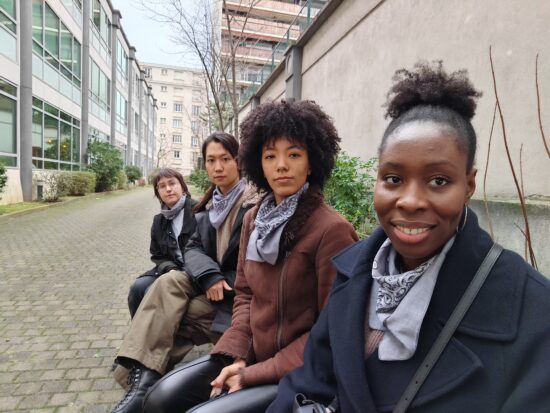

Texture
Honor Magic6 Pro
79
Texture tests analyze the level of details and the texture of subjects in the images taken in the lab as well as in real-life scenarios. For natural shots, particular attention is paid to the level of details in facial features, such as the eyes. Objective measurements are performed on chart images taken in various lighting conditions from 1 to 1000 lux and different kinds of dynamic range conditions. The charts used are the proprietary DXOMARK chart (DMC) and the Dead Leaves chart.
The Magic6 Pro front camera captured fairly good detail in daylight and when shooting under indoor conditions. However, a loss of detail was noticeable in low light. Our testers also observed some unnatural detail rendering in some scenes, especially in low light.

Noise
Honor Magic6 Pro
94
Noise tests analyze various attributes of noise such as intensity, chromaticity, grain, and structure on real-life images as well as images of charts taken in the lab. For natural images, particular attention is paid to the noise on faces, but also on dark areas and high dynamic range conditions. Objective measurements are performed on images of charts taken in various conditions from 1 to 1000 lux and different kinds of dynamic range conditions. The chart used is the DXOMARK Dead Leaves chart and the standardized measurement such as Visual Noise derived from ISO 15739.
The Honor Magic6 Pro managed to maintain a quite good trade-off between texture and noise across all light conditions, outperforming the iPhone 15 Pro Max in this respect. The difference between the two cameras was most noticeable in low light, where the Honor managed visibly lower noise levels.
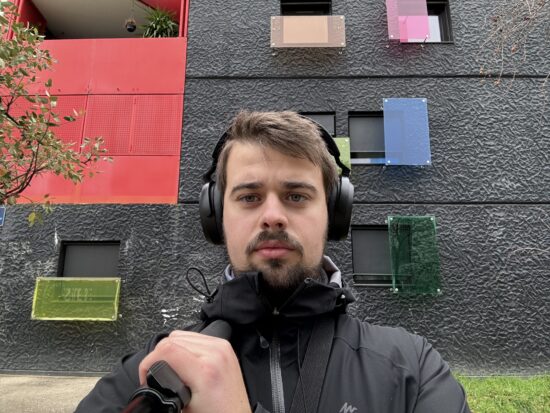

Artifacts
Honor Magic6 Pro
91
The artifacts evaluation looks at lens shading, chromatic aberrations, distortion measurement on the Dot chart and MTF, and ringing measurements on the SFR chart in the lab. Particular attention is paid to ghosting, quantization, halos, and hue shifts on the face among others. The more severe and the more frequent the artifact, the higher the point deduction on the score. The main artifacts observed and corresponding point loss are listed below.
Our experts found some noticeable artifacts in the Magic6 Pro’s image output, including color quantization and face rendering artifacts. While the camera captured high levels of detail on the eyes and on the edges of facial features, skin texture was sometimes rendered unnaturally. Color quantization could be quite noticeable, especially in low light. The testers also observed a loss of sharpness towards the edges of the frame, as well as a hue shift close to clipped areas.
Bokeh is tested in one dedicated mode, usually portrait or aperture mode, and analyzed by visually inspecting all the images captured in the lab and in natural conditions. The goal is to reproduce portrait photography comparable to one taken with a DSLR and a wide aperture. The main image quality attributes paid attention to are depth estimation, artifacts, blur gradient, and the shape of the bokeh blur spotlights. Portrait image quality attributes (exposure, color, texture) are also taken into account.
The Honor Magic6 Pro achieved the best results for Selfie bokeh to date. The Bokeh simulation was very natural, with a pleasant blur and smooth blur transitions. In addition, spotlights in the background were rendered naturally, with high contrast and a well-defined shape.
Video
Honor Magic6 Pro
159
DXOMARK engineers capture and evaluate more than 2 hours of video in controlled lab environments and in natural low-light, indoor and outdoor scenes, using the front camera’s default settings. The evaluation consists of visually inspecting natural videos taken in various conditions and running objective measurements on videos of charts recorded in the lab under different conditions from 1 to 1000+ lux and color temperatures from 2,300K to 6,500K.
The Honor Magic6 Pro video mode was tested at 4K resolution and 30 frames per second as this configuration delivered the overall best video quality. At these settings, video performance was great across most sub-tests, with high levels of detail and low noise in most conditions. Texture and noise were also the most improved areas over the Magic5 Pro, and the main advantage over the Apple iPhone 15 Pro Max. In addition, dynamic range was wide in most test conditions, and color rendering was pleasant. Like for still images, a wide depth of field helped keep multiple subjects in a scene in focus. Video stabilization was the Honor’s only weakness when compared to its direct rivals in the Ultra Premium segment.

Exposure
Honor Magic6 Pro
89
Video target exposure was accurate in most conditions but sometimes our testers observed some underexposure in low-light clips. Dynamic range was generally wide, but highlight clipping could occur in some bright light scenes.

Color
Honor Magic6 Pro
90
Exposure tests evaluate the brightness of the face and the dynamic range, eg. the ability to render visible details in both bright and dark areas of the image. Stability and temporal adaption of the exposure are also analyzed. Image-quality color analysis looks at skin-tone rendering, white balance, color shading, stability of the white balance and its adaption when light is changing.
Our testers found the Magic6 Pro’s video color rendering to be nice and pleasant when recording in bright light as well as under indoor lighting. In addition, the camera captured nice skin tones and managed a neutral white balance. However, in more difficult backlit scenes, we observed some color rendering failures and noticeable color casts.

Texture
Honor Magic6 Pro
97
Texture tests analyze the level of details and texture of the real-life videos as well as the videos of charts recorded in the lab. Natural video recordings are visually evaluated, with particular attention paid to the level of detail on the facial features. Objective measurements are performed of images of charts taken in various conditions from 1 to 1000 lux. The chart used is the Dead Leaves chart.
Video clips recorded on the Magic6 Pro front camera in bright conditions offered high levels of texture. In addition, fine detail was preserved well.

Noise
Honor Magic6 Pro
83
Noise tests analyze various attributes of noise such as intensity, chromaticity, grain, structure, temporal aspects on real-life video recording as well as videos of charts taken in the lab. Natural videos are visually evaluated, with particular attention paid to the noise on faces. Objective measurements are performed on the videos of charts recorded in various conditions from 1 to 1000 lux. The chart used is the DXOMARK visual noise chart.
Both visual noise and temporal noise were fairly well controlled when recording video in bright light. However, noise tended to become noticeable in the background of low-light scenes.

Stabilization
Honor Magic6 Pro
84
Stabilization evaluation tests the ability of the device to stabilize footage thanks to software or hardware technologies such as OIS, EIS, or any others means. The evaluation looks at overall residual motion on the face and the background, smoothness and jellow artifacts, during walk and paning use cases in various lighting conditions. The video below is an extract from one of the tested scenes.
The Magic6 Pro’s video stabilization performed on a very similar level as on the iPhone 15 Pro Max, with some camera shake still noticeable and moderate sharpness differences between frames. On occasion, the Honor Magic6 Pro footage also displayed a slight frame shift.

Artifacts
Honor Magic6 Pro
92
Artifacts are evaluated with MTF and ringing measurements on the SFR chart in the lab as well as frame-rate measurements using the LED Universal Timer. Natural videos are visually evaluated by paying particular attention to artifacts such as quantization, hue shift, and face-rendering artifacts among others. The more severe and the more frequent the artifact, the higher the point deduction from the score. The main artifacts and corresponding point loss are listed below
Hue shift close to clipped areas and on faces was a common occurrence in the Honor’s video clips during our testing. In low light, our testers also observed some face rendering artifacts.


